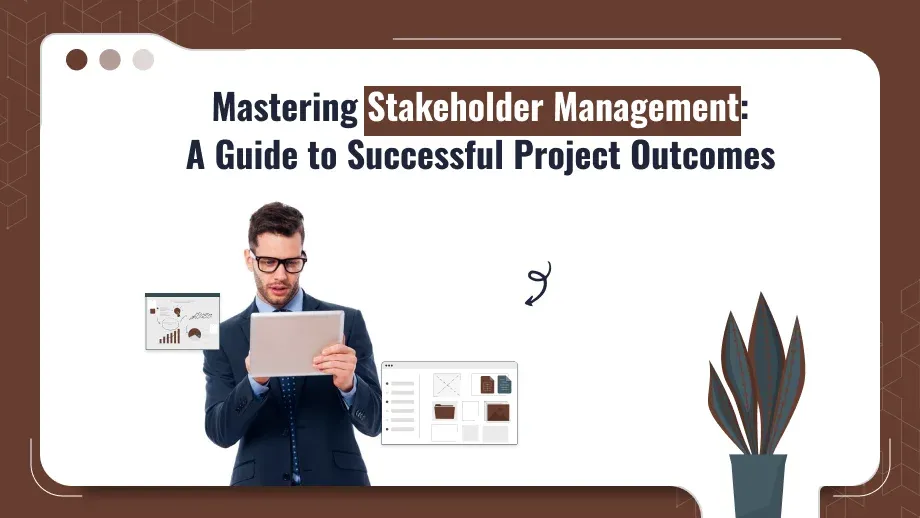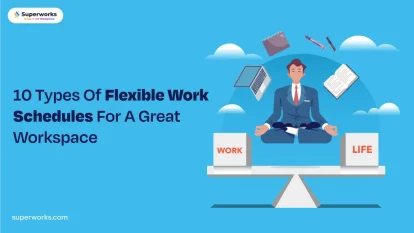
In today’s ever-changing business world, project success often hinges on how well you handle stakeholders. Big construction jobs, new product releases, or major business shifts all depend on stakeholders to shape their results. When you manage stakeholders well, you make sure their needs, hopes, and worries are dealt with. This helps your project succeed and supports your company’s long-term aims.
This in-depth guide will break down what is stakeholder management why it matters, key ways to work with stakeholders, common hurdles you might face, and top tips to build strong ties with stakeholders. By the time you finish reading, you’ll have the know-how and tools to create a solid plan for managing stakeholders in your projects.
What Is Stakeholder Management?
Stakeholder management involves identifying, analyzing, and engaging with people, groups, or organizations that have a stake in or can shape a project’s outcome. Stakeholders can include a broad range of players, from team members inside the company to outside entities such as customers, vendors, government agencies, regulators, and even nearby communities. Each stakeholder might have different levels of sway and concern in the project, which makes it crucial to handle these relationships with care.
The aim of stakeholder management is to create and keep good ties with all stakeholders. This happens through open talks being clear, and taking care of what they need and worry about as the project goes on. Doing this cuts down on fights, helps the project run, and makes it more likely that the project will turn out well.
Types of Stakeholders
In project stakeholder management, we split stakeholders into two main groups:
- Internal Stakeholders: These people or teams work inside the company, like project groups, bosses, department leaders, and workers. They play a direct role in the project or it affects them, and they want it to succeed.
- External Stakeholders: This group includes clients, customers, suppliers, investors, government offices, and rule-making bodies. Even though they’re not part of the company, their choices and power can shape the project’s direction and how well it does.
Why Is Stakeholder Management Important?
Good stakeholder are of great importance for many reasons:
Ensuring Project Alignment
One main advantage of good stakeholder management in project management is to make sure all stakeholders agree with the project’s aims and goals. When project managers involve stakeholders and keep them in the loop throughout the project, they can make sure everyone understands what the project wants to achieve.
For instance, if stakeholders don’t agree on the project’s vision or expected results, it might cause arguments poor communication, or holdups later in the project. Keeping stakeholders on the same page at every step helps the project stay focused and move forward.
Managing Expectations
People involved in projects often want different things, and their wishes can shift as the project moves forward. Stakeholder management techniques help set doable goals and make sure everyone gets the project’s limits, like money, time, and what’s included.
Take this example: A customer might want new software ready by a certain date, but the budget might not allow it. When project leaders talk about these limits and work out realistic targets, they can stop mix-ups and letdowns.
Getting People on Board
Key players who have a big impact on whether a project succeeds, like top managers, customers, or backers, need to get behind the project’s goals and back its rollout. If they don’t support it, the project might run into pushback, holdups, or even get scrapped.
Getting key players involved from the start hearing their worries, and meeting their needs helps them feel like they own and are committed to the project. This really matters when you need to get the green light for crucial resources, money, or big choices.
Identifying and Mitigating Risks
People with industry knowledge or a stake in the project often spot risks that project leaders might miss. When project leaders include these key players in talks about assessing and reducing risks, they can tackle concerns head-on and lessen the blow of potential problems.
Take, for example, a government agency that regulates industries. It might point out compliance risks that need fixing before a project can move ahead. This helps the company steer clear of expensive legal hurdles.
Helping Projects Run Smoothly
Projects with many key players can get tricky when their goals clash. Good management of these players makes sure these complex issues are handled, messages are clear, and fights are settled before they grow. This keeps the project on track, cuts down on hold-ups, and boosts how well things work overall.
Boost Your Projects – Master Stakeholder Management Today
Identify, engage, and align stakeholders to ensure project success from the very start.
Key Stakeholder Management Techniques
To manage stakeholders well, project managers need a smart plan that includes talking getting people involved, and solving problems. Here are five important ways to handle project stakeholders:
1. Find Stakeholders
The first thing in stakeholder management is to spot all the people, teams, and companies that have a stake in the project or that the project affects. Project managers can do this by looking closely at stakeholders. This helps them figure out who the stakeholders are how much they care about the project, and how they might change things.
It’s crucial to involve both internal and external stakeholders in this process, as ignoring any group might cause problems later in the project. Teams often use a stakeholder management plan to record stakeholders, their roles, and their influence.
2. Analyze Stakeholder Influence and Interest
Stakeholders don’t all have the same level of influence or interest in the project. To classify stakeholders based on their power (influence) and interest, project managers perform a stakeholder analysis. This info helps project managers prioritize how they engage with stakeholders.
For instance, stakeholders who have a big impact and strong interest (like bosses or customers) need regular, in-depth updates, while those with less sway and interest (like vendors) might need occasional check-ins.
3. Develop a Stakeholder Engagement Plan
After identifying and examining stakeholders, the next move is to make a stakeholder plan. This plan spells out how the project team will interact with stakeholders, including how often and in what way they’ll communicate. It’s key to customize the communication approach based on each stakeholder’s likes and level of involvement.
Take this example: a top executive might prefer short weekly updates by email, while a team member might need daily task updates through project management software.
4. Communicate Effectively and Transparently
Talking is key to working well with stakeholders. Keeping them in the loop about how the project’s going, what risks might come up, and any changes helps build trust and keeps things open. This talking should go both ways meaning stakeholders should also get chances to share what they think.
When things change, like project timelines shifting or budget limits tightening talking about it right away and helps manage what people expect and keeps stakeholders on board.
5. Address Stakeholder Concerns Proactively
During a project, people involved might raise worries or objections. It’s best to deal with these head-on to stop them from turning into big problems. Those in charge of projects should create a setting where everyone feels at ease sharing their concerns. They should then work together to come up with answers.
Let’s say a client is worried about how long the project will take. The person running the project can look at other options. These might include shifting around resources or tweaking the project’s scope to fit what the client needs.
Overcoming Common Stakeholder Management Challenges
While stakeholder is crucial to the success of a project, it poses quite a number of challenges. Here are common obstacles and how to overcome them:
Conflicting Stakeholder Interests
As shown in many projects, the interests of different stakeholders sometimes conflict with each other. Take for example the finance department, which may be wishing to stick strictly to budget, yet the marketing team wants to go for the maximum reach and impact that a project can achieve. Such conflicting interests give rise to tension and delays.
Third, project managers should reconcile between the stakeholders and find a middle ground which balances the interests of various parties. Open communication and information-based decision can pave the way for collaboration between stakeholders toward common goals.
Resistance to Change
Stakeholders who may have interests in maintaining things the way they are oppose any change resulting from the project. Such resistance could act as a cause of delay, no support, or even failure of the project.
Managing Resistance Anticipate and approach the resistant stakeholders in the earlier stages of planning by communicating all the benefits of the project. Sometimes the resistance can be eased by providing training, resources, and other support to aid in changing the resistance of stakeholders.
Managing Expectations
Unrealistic expectations from the project stakeholders may lead to disappointment when the project results do not meet such expectations. It is common especially among stakeholders with insufficient knowledge of project constraints like time cost and scope.
It is essential that a project manager should, at first, set up realistic expectations and communicate with stakeholders about any kind of limitation. Maintaining regular communication and updating helps to manage expectations within a project so that stakeholders are reminded and remain interested.
Inconsistent Stakeholder Engagement
Stakeholders may go out of interest and disengage as the project progresses if they have little opportunity to engage in key decisions at times when involvement is most needed. This can ultimately mean a lack of support, delayed feedback, or an array of surprising problems much later in the project.
This would contribute to maintaining stakeholder engagement because, at key milestones, project managers should communicate well with stakeholders and engage them in critical decisions regarding the project and make sure that the views of the stakeholders are considered at every stage of the project.
Best Practices for Implementing Stakeholder Management
Use any of the following best practices to stakeholder management:
Engage Stakeholders Early and Continuously
Engage the stakeholders at the very outset of the project; allow for greater cooperation and support. Involve them in early decision-making processes so their needs come into the picture, and their buy-in is secured before critical project milestones.
Long run success could be built through trust to stakeholders by ensuring one is honest, has said things made to happen, and also resolves issues before they arise. When stakeholders are more assured of the trust in the project team, they will be more assured to cooperate and support the project when issues arise.
Build Strong Relationships Based on Trust
The second way that the “need to know” concept complicates communication is that, in addition to varying levels of communication desired, stakeholders may differ on the frequency and detail. Stakeholders want information either at a more frequent level of detail or just periodic general overviews. Tailor your communication to meet stakeholders at a level that keeps them informed enough but not overwhelmed by too much information.
Tailor Communication to Stakeholder Needs
Conducting regular checks of stakeholder satisfaction, for example, through surveys, feedback sessions, or informal check-ins can churn out much information on how stakeholders perceive the project. Based on this, issues are easily picked early, and corrective actions can then be taken to foster a healthy relationship with stakeholders.
Monitor Stakeholder Satisfaction
There is potential to streamline stakeholders using project management software and Confluence Tool which can centralise communication, track progress, and Smartsheet Project Management. The different tools make sure that all the stakeholders have equal access to equal information, allowing them to contribute fruitfully towards the project.
Conclusion
Regardless of the scale of the project, a constructive stakeholder would work for a project’s success. Early identification, understanding of the needs and interests of stakeholders, and constant engagement with them help in building positive relationships that work towards the success of the project. It is like the importance of payroll management in India for organisational efficiency.
Stakeholder investment ensures the participation of projects in correct alignment, controls risks, facilitation for better decision-making, and secures necessary support by key players. Best practices and techniques in stakeholder enable organizations to effectively take control of stakeholder dynamics, so a successful project result is achieved.
stakeholder management skills in today’s competitive environment is the passion of any project manager. Hence, at a project manager interview, showing evidence of several stakeholder engagement strategies can make you stand apart from others. Whether you are managing an organization’s small or large-scale project, knowing how to master the stakeholder in project management will ensure that your project is delivered on time, to budget, and the required outcomes.





